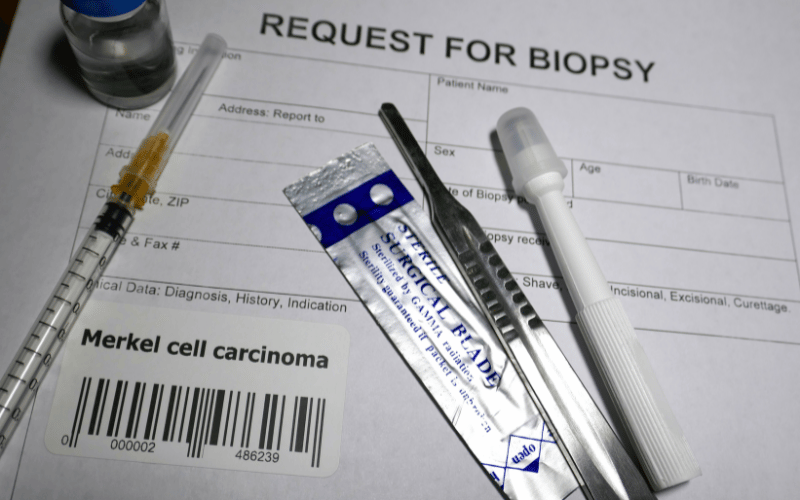Introduction: The Unveiling of Merkel-cell Carcinoma
In a world where healthcare knowledge is more crucial than ever, understanding specific medical conditions, even the rarer ones, is vital. Enter Merkel-cell Carcinoma (MCC). While the name might sound like a mouthful, it’s a term that carries significant weight in the medical community, especially for dermatologists. As one ventures into the vast realm of skin cancers, MCC stands out. Not just because it’s relatively rare, but due to its aggressive nature. The condition can be a formidable adversary, marked by its rapid growth and potential for spreading. But what exactly is MCC? And why should you be informed about it? Let’s delve deep into this skin condition, unveiling its essential facts and shedding light on its impact, treatment, and more.

MCC, at its core, is a condition that bridges the divide between the world of dermatology and the intricate workings of the human nervous system. Originating from the neuroendocrine cells located at the base of the epidermis, these cells, better known as Merkel cells, play a pivotal role by connecting to the nerve endings, especially those that give us our sense of touch. Now, when these cells become cancerous, we encounter MCC. While the condition might account for a small fraction of all skin cancers, it punches well above its weight in terms of aggressiveness and potential risks.
A distinguishing factor of MCC, compared to other skin cancers, is its ability to fly under the radar. At its early stages, it can be easily mistaken for other benign skin conditions. This deceptive nature underscores the need for professional intervention, early detection, and prompt treatment. Furthermore, with the global rise in skin cancer cases, MCC, albeit still considered rare, is steadily marking its presence. This makes it all the more critical to understand its nuances.
Fact 1: What is Merkel-cell Carcinoma (MCC)?

Merkel-cell Carcinoma, commonly referred to as MCC, stands out in the universe of skin cancers. Originating from Merkel cells, it bridges the realm of dermatology with the intricate workings of our nervous system. Merkel cells, found at the base of the epidermis, are tied closely to nerve endings that sense touch. This makes them incredibly vital to our tactile response.
However, when these cells turn cancerous, the result is MCC. Although it’s not the most common skin cancer, it’s undoubtedly one of the most aggressive. The cancer’s nature means that it proliferates rapidly, making early detection crucial. Without timely intervention, it’s known to spread to other parts of the body.
Its rarity might make one assume that its impact is negligible. However, it’s quite the contrary. While it constitutes only a fraction of skin cancer cases, its aggressive behavior ensures it remains on the radar of medical professionals. The threat of MCC is real, and awareness is our first line of defense.
A distinguishing feature of MCC is how stealthily it can progress. Its early stages can easily be confused with benign skin conditions, making it a silent menace. This deceptive quality further emphasizes the importance of regular check-ups and professional consultations.(1)